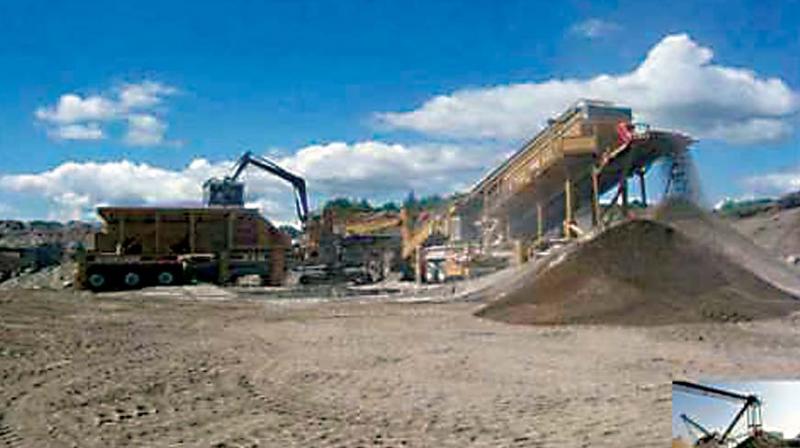Norms for quarries: Courts rapped Karnataka government
The state government continues to get brickbats for its lackadaisical approach towards environment.

Bengaluru: The state government continues to get brickbats for its lackadaisical approach towards environment. After Kushal Stone Crushers declared that it will exit the area near Bannerghatta Biological Park as it falls under the eco-sensitive zone, amendments to the Karnataka Regulation of Stone Crushers (Amendment) Act, 2013 are once again being discussed by environmentalists.
On the recent controversy that stone quarrying and stone crushing units are functioning in the eco-sensitive zone near Bannerghatta National Park illegally, environmentalists said that the damage these units doing to the wildlife and human life is unimaginable.
In October 1998, the Karnataka High Court directed the state government to shift all crushing units to safe zones. The Quarry Owners’ Association approached the Supreme Court, but the plea was dismissed. In 2011, the state government too knocked on the doors of the apex court, but its appeal too was turned down with the court saying, “In our view, there is no valid ground much less justification to entering the prayers made in the applications, which would allow the state government to wriggle out of its obligation to take action in accordance with the High Court’s order October 10, 1998.”
The Karnataka Regulation of Stone Crushers Ordinance passed in 2011 states that all the stone crushers should be outside the safe zone, which should be at least 2 km away from national highways, animal habitats, temples, schools and rivers and 1 km away from the limits of an inhabited village or any private land shown as cultivable in the revenue records.
The Siddaramaiah-led government that came to power in 2013, however, brought amendments to the 2011 Act and reduced the location of safe zones from national highway to 200 metres from 2 kilometres and brought down the distance between safe zone and link roads to 100 metres from 500 metres.
Sridhar Pabbisetty, CEO, Namma Bengaluru Foundation, said, “To avoid human-animal conflict, the safe zone is mandatory. The amendment appears to be a pacifier to the crushers’ lobby.”
To minimise the effect of dust, the 2013 amendment also stated that a cluster of stone crushers shall provide 15-20 feet wall/GI sheet and adopt necessary dust containment system, like building enclosures.
The lead scientist at Indian Institute of Science, Dr T.V. Ramachandra said, “No measures to contain dust are being taken. Innocent animals and children are the worst victims. These crushing units are in the eco-sensitive zone and wildlife cannot afford to have such high levels of vibration from these units.”
Dr Ramachandra said that the wildlife area is the catchment for Cauvery River and a part of an animal corridor.
On Trial
The Supreme Court in MC Mehta and Another vs Union of India and others stated that an enterprise engaging in hazardous industry owes an absolute obligation to the community to ensure that no harm results to anyone on account of such hazardous activity. No person, therefore, can claim to have a right of carrying commercial activity which admittedly affects the health of others.
In 2011, the Karnataka High Court directed all crushing unit in the unsafe zone to be closed. In 1998, in a petition filed by Obayya Poojari, the court issued guidelines to identify safe zones for stone crushing units. The SC upheld the high court’s decision when quarry owners’ association appealed before the court.

